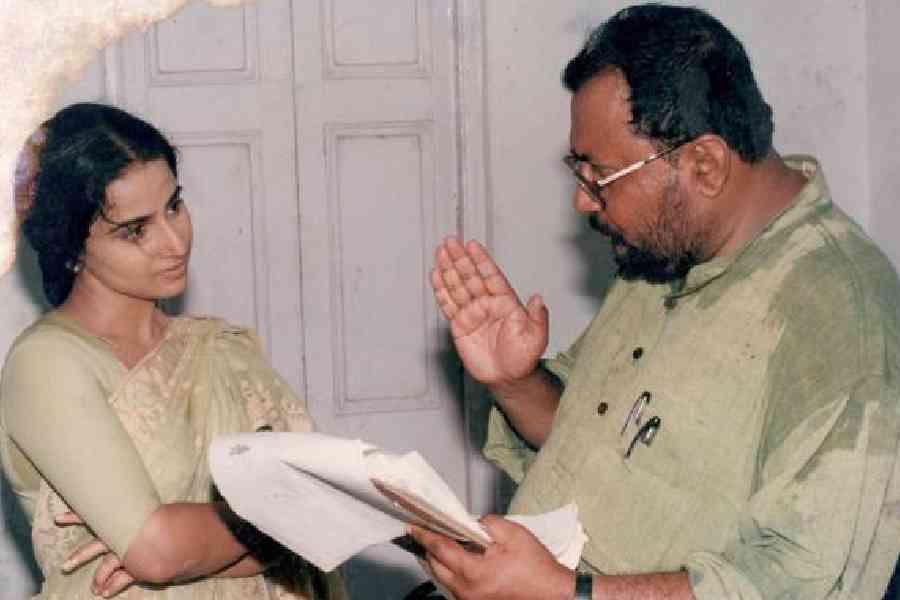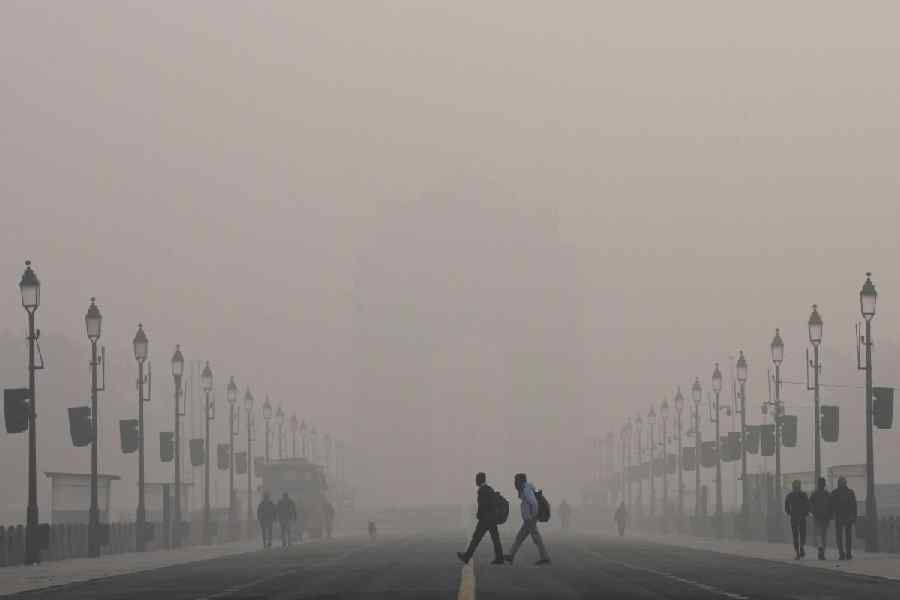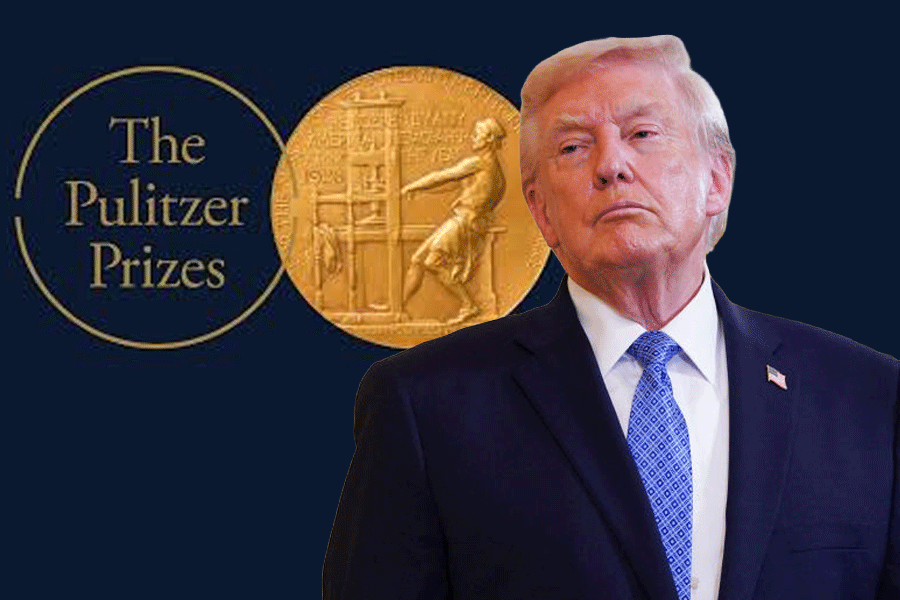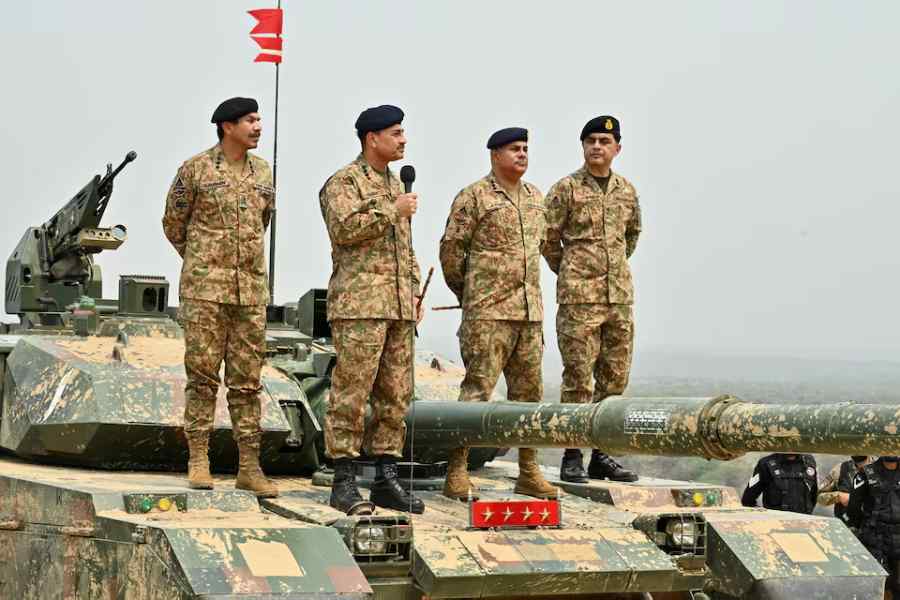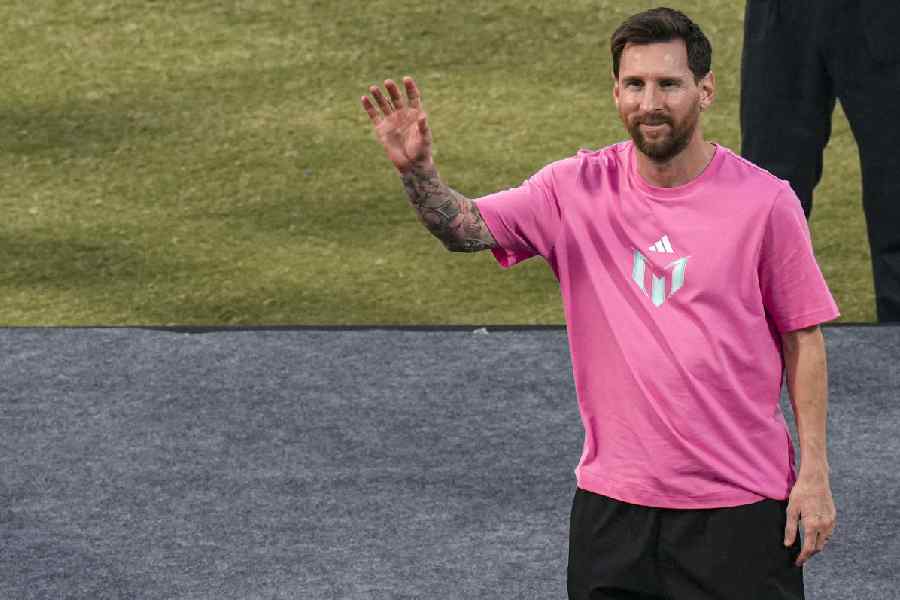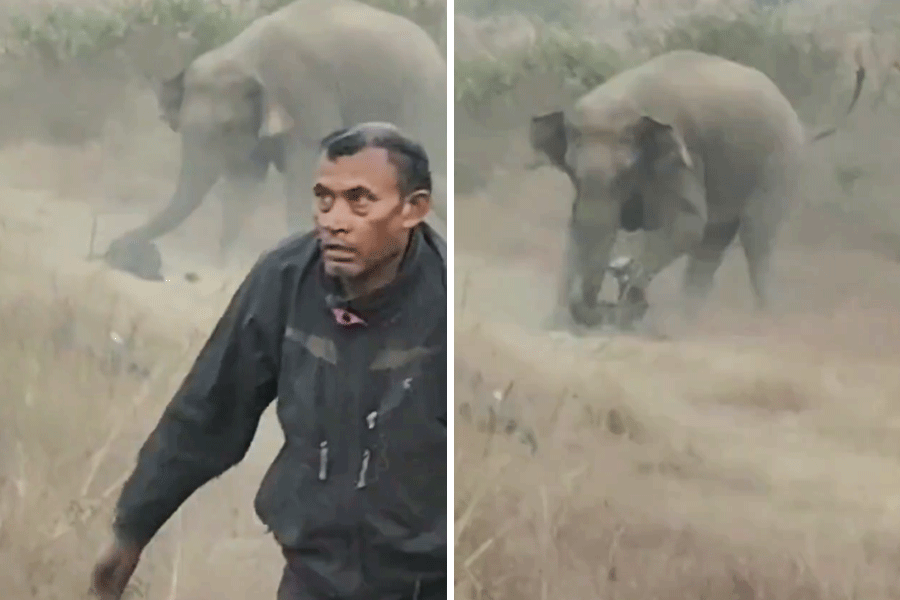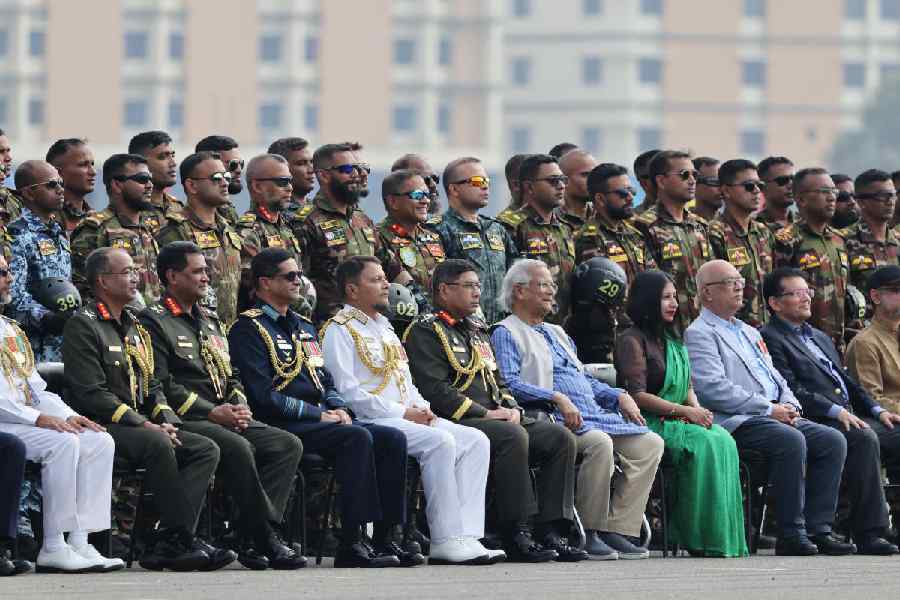One of the star guests at the 30th Kolkata International Film Festival, held last December, was the ever-charming and gorgeous Vidya Balan. It was touchdown Calcutta for her to attend the screening of her debut film, Bhalo Theko, directed by filmmaker and theatre director Gautam Halder. The festival celebrated the film’s 20th anniversary of release.
Bhalo Theko was Halder’s first feature film, and even after two decades of its release and two years after his passing on November 3, 2023, the film retains its appeal for cinephiles. The screening served as a rightful tribute to his contributions to cinema, which was unfortunately brief. “I remember, 20 years ago Bhalo Theko was released on December 25. This sari was gifted to me by Gautamda and Chaiti boudi (Gautam Halder’s wife), and I wore it to the premiere of the film. Today, I am wearing it again… today brings back so many memories. My career started with Bhalo Theko… Gautamda was a very gentle man. He used to call me Bidya! (laughs)... my mother accompanied me to the shoot location and met Gautamda, boudi, and Rai (Raipurna, daughter of Gautam Halder). They invited us to their house and he narrated the script to me in Bengali. I understood it completely. I don’t know how… the passion with which he narrated the story made me feel like he had to tell it. My first scene was with the late Soumitra Chatterjee… I had to say ‘jethamoshai’ but I couldn’t get the pronunciation right. Gautamda said I could say ‘jethu’ instead. Gautamda made me feel so comfortable. I still don’t know how I managed to perform as I did,” said Vidya at the festival, reminiscing the director and her debut film.
A professor of Comparative Literature by profession, Halder was deeply passionate about films, music and theatre from an early age. However, he was not a professional practitioner of either, before quitting his job as a professor, and later as a corporate employee, to pursue his passion. Halder’s initial body of work is primarily documentaries, where he collaborated with legends of Indian classical music. His docu-feature A Story of Integration received a special mention at the National Awards, and Strings for Freedom, a documentary on music maestro Ustad Amjad Ali Khan, was selected for the Indian Panorama in 1998. He was not only passionate about theatre from a young age but also actively promoted it. His enthusiasm for watching and supporting theatre led him to encounter the legendary Bengali theatre figure, Sambhu Mitra.
Halder’s wife, Chaiti Halder, recalled: “He used to teach tuition and earn ₹30, but he would spend ₹28 to buy tickets for plays for non-theatrical students. Sambhu Mitra was curious about who this guy was, which is how they met, and remained in touch until the end.” Talking about his inspiration in the field, Chaiti shared: “He (Gautam Halder) had a great relationship with everyone, but was particularly close to Habib Tanvirji. Tanvir’s plays inspired him too, specially Charandas Chor.”
His first play, Kacher Manush, which starred Debshankar Halder and Bijoylakshmi Barman, was followed by the staging of Nashtaneer and Raktakarabi. Although he started directing plays much later, he was actively engaged in the theatre community. “A newborn goes home first from the hospital, but my mother carried me in her arms straight from the hospital to Nandan because my dad was there caught up in some work! I was probably just three days old. So, my journey with my father started there,” recalled 27-year-old Raipurna, Halder’s only daughter. “For my father, art was both his passion and profession, and I witnessed him celebrate it every day,” she added.
Echoing Raipurna, actor Sohini Sengupta recalled Halder’s association with Nandikar theatre group and his passion for his work. She said: “He was very involved in organising Nandikar Theatre Festival, and even at times, if we didn’t have money, Gautamda would take the initiative and do it all by himself. I remember him as a very giving person despite being a brilliant artiste. He didn’t have any pride. He was a person of many talents. Perhaps, his emotional quotient developed his artistic sensibility. He didn’t have any agenda while making films or directing plays. He didn’t have anything to prove. He did it out of pure joy.”
Reminiscing the days on the sets of Bhalo Theko, Raipurna shared how her father used to cook for everyone despite directing. But as a director, she felt, her father was perhaps stricter with the camera than he was on stage. “I saw him do takes and retakes with great precision. Vidya aunty (Balan) didn’t know a word of Bengali at that time, but my father insisted that the first reading of the script be in Bengali because it would capture the emotion of a Bengali girl and her jethamoshai… he never took shortcuts,” Raipurna shared. Bhalo Theko was no less than poetry on celluloid, with a treatment that was ahead of its time. Chaiti shared how filmmaker Halder was greatly inspired by the works of Ritwik Ghatak and Satyajit Ray, and watched foreign films and read books about filmmaking.
Debshankar Halder, who featured in Bhalo Theko and also acted in his play Kacher Manush, recalled him as a director who gave freedom to his actors and was appreciative of improvisations. ”My relationship with him goes way back to my Nandikar days in 1986. His thoughts on films and theatre inspired me. Bhalo Theko was a great experience. Our outdoors used to happen at a place in Raichak and it was a fun set with Vidya, Soumitra Chatterjee and Parambrata Chattopadhyay. We also did a documentary film for Nandikar together. Our play Kacher Manush was a huge hit, too,” he said.
Gautam Halder’s unreleased second feature film in Bengali, titled Nirban, starred Rakhee Gulzar. Recalling the casting of the film, Chaiti shared how Ustad Amjad Ali Khan connected Halder to Rakhee Gulzar through his wife’s acquaintance with her. “Given today’s political situation, the film is very relevant. We hope to release it soon. It was shown at IFFI but never had a theatrical release. Initially, Rakhee Gulzar was hesitant about working since she had stepped away from films, but after about 15 to 20 minutes of conversation with my husband, she welcomed him like family,” she said.
Sharing how particular her father was behind the lens, Raipurna recalled an incident from the shoot of Nirban: “There was a scene that required both Holi and Rath Yatra to be shot on the same day. As Rakhee Gulzar was in town, the entire North Calcutta came to see her. My father hired people to fly drones to check whose faces in the crowd had Holi colours and asked them to hold back, promising that they would get pictures with Rakheeji.”
Halder had a special skill for spotting talent and was always keen to work with newcomers as much as the seniors. Raipurna remarked how he was “quite eccentric and a risk-taker”, and shared how her parents had to come on board as producers when producers backed out because of the casting of Vidya Balan, a newcomer, just 20 days ahead of the shoot. “Gautam loved working with the new generation to avoid any external influences. He enjoyed grooming actors...,” said Chaiti.
His eagerness for the new was not just restricted to newcomers; it was also about reinventing his approach in the fields of theatre and film. His play Nashtaneer was a cine-play that involved a part of the play being projected on the screen as a continuation of the performance on stage. While his play Kacher Manush had a long run with performances in the West, too, Raktakarabi was an all-time hit, with over 300 shows with the Purba Paschim group. Music was an important aspect of his plays and he made sure to get it recorded by the stalwarts. “It probably never happened in the history of Indian theatre that so many maestros provided the background score for one play — Ustad Amjad Ali Khan, Ayaan Ali Khan, Amaan Ali Khan, Ustad Rashid Khan, Kaushiki Chakraborty, and Pandit Ajoy Chakraborty,” said Raipurna.
She also shared how her father prioritised every role in the making of his films and plays, and often did most of the work himself. “In Raktakarabi, the flowers used by the actors on stage were all handmade. We spent entire nights making them,” Raipurna shared.
Recalling a family vacation in Kashmir, she added that even during leisurely times, his father’s mind remained occupied with theatre. While everyone else enjoyed the beautiful scenery of Dal Lake, Halder distanced himself from the family to create a demo set using wooden logs. Chaiti emphasised that for him theatre and cinema represented a larger-than-life vision that extended beyond mere words. “It was his whole lifestyle,” she said.
Actor Soumitra Mitra, who worked with Halder in Bhalo Theko and Raktakarabi, remembered him as “compassionate and crazy”. “I loved his madness! He was larger than life and everything for him involved art. Even if it was just cooking for a bunch at a holiday, there was craft and care involved in what he would do. He had his own style of doing things and so I wanted him to direct Raktakarabi for Purba Paschim theatre group,” said Mitra.
When discussing his choice of subjects for stage and screen, Raipurna noted, “He was definitely ahead of his time. Most of his work featured female protagonists and perspectives and the importance of not mistreating women. He was certainly edgy.” She also recalled the adda sessions she grew up watching at home of her father with the likes of Soumitra Chatterjee and Sunil Gangopadhyay, and how such gatherings would be incomplete without her mother’s machher dimer bora and fish fry. “He couldn’t really separate his personal and professional lives. I have fond memories of Ustad Zakir Hussain, Ustad Amjad Ali Khan, Pandit Ajoy Chakraborty, and his wife, Chandana Chakraborty, and Ustad Rashid Khan and his family,” she added. Despite his connections with renowned figures in the music industry, Halder chose not to pursue a professional singing career. Singing for him was an act of pure joy and a tool for vocal training for a better performance on stage.
A workaholic, Halder’s contributions extended far beyond his own plays and films. He helped others with their productions and engaged in social work, keeping himself busy with various activities. “He was heavily involved in social work. In Joynagar, he established a hospital called Swastha Sadan and contributed much of the necessary equipment. From organising weddings to the Nandikar Theatre Festival and Dover Lane Music Conference, he jumped into everything and celebrated every occasion,” Raipurna shared.
August 14 marks Halder’s 69th birth anniversary. “He used to not celebrate his birthday. He used to say, ‘If my birthday is celebrated after I pass away, then I will think that I have done something’,” said Raipurna. The family plans to keep celebrating his life and works by sharing what remains with them through various social media platforms. “I have seen him celebrate his work and my intention is to celebrate him through his work as much as I can. After my father passed away, we did a programme on him, we released a book on him. I wish to present some of his old work in film, documentary and music every year on YouTube,” she added.

